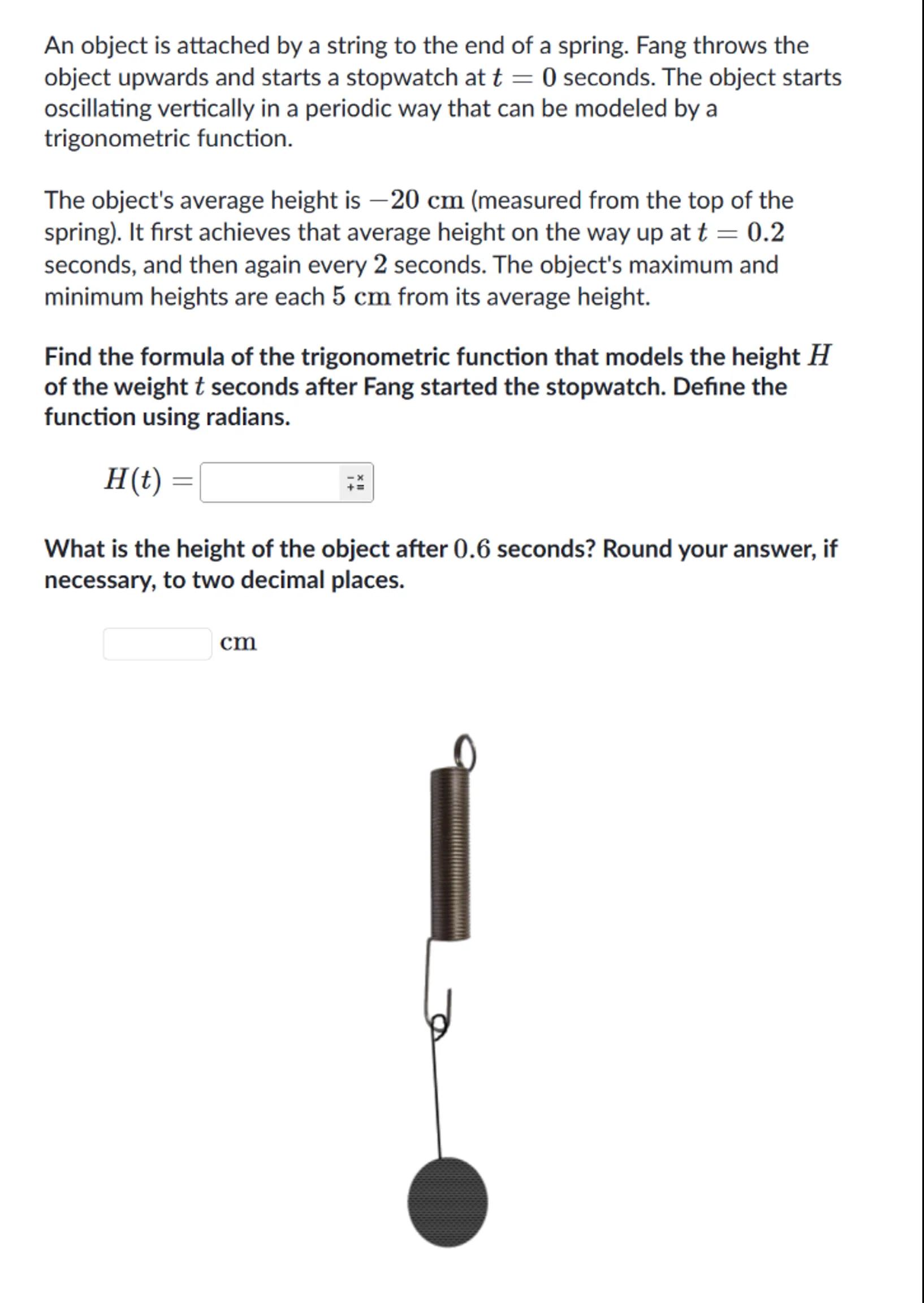
Sia

Question
Math
Posted 10 months ago
An object is attached by a string to the end of a spring. Fang throws the object upwards and starts a stopwatch at seconds. The object starts oscillating vertically in a periodic way that can be modeled by a trigonometric function.
The object's average height is (measured from the top of the spring). It first achieves that average height on the way up at seconds, and then again every 2 seconds. The object's maximum and minimum heights are each from its average height.
Find the formula of the trigonometric function that models the height of the weight seconds after Fang started the stopwatch. Define the function using radians.
What is the height of the object after 0.6 seconds? Round your answer, if necessary, to two decimal places.


Answer from Sia
Posted 10 months ago
Solution by Steps
step 1
To find the trigonometric function that models the height of the weight over time, we need to determine the amplitude, period, phase shift, and vertical shift
step 2
The amplitude is the maximum deviation from the average height, which is
step 3
The period is the time it takes for one complete oscillation, which is seconds. Since the function will be in terms of radians, we use the relationship to find the angular frequency
step 4
Solving for , we get
step 5
The phase shift is determined by the time it first reaches the average height on the way up. Since this occurs at seconds, the phase shift is seconds to the right. In terms of , the phase shift is
step 6
The vertical shift is the average height, which is
step 7
Combining these values, the trigonometric function is
step 8
To find the height of the object after seconds, we substitute into the function
step 9
Calculating
step 10
Simplifying the cosine term, we get
step 11
Using a calculator, we find that
step 12
Therefore,
[1] Answer
Key Concept
Modeling periodic motion with trigonometric functions
Explanation
The trigonometric function for the height of the weight over time is determined by the amplitude, period, phase shift, and vertical shift. The height at a specific time is found by substituting the time into the function.
Not the question you are looking for? Ask here!
Enter question by text
Enter question by image
Unlock Smarter Learning with AskSia Super!
Join Super, our all-in-one AI solution that can greatly improve your learning efficiency.
30% higher accuracy than GPT-4o
Entire learning journey support
The most student-friendly features
Study Other Question